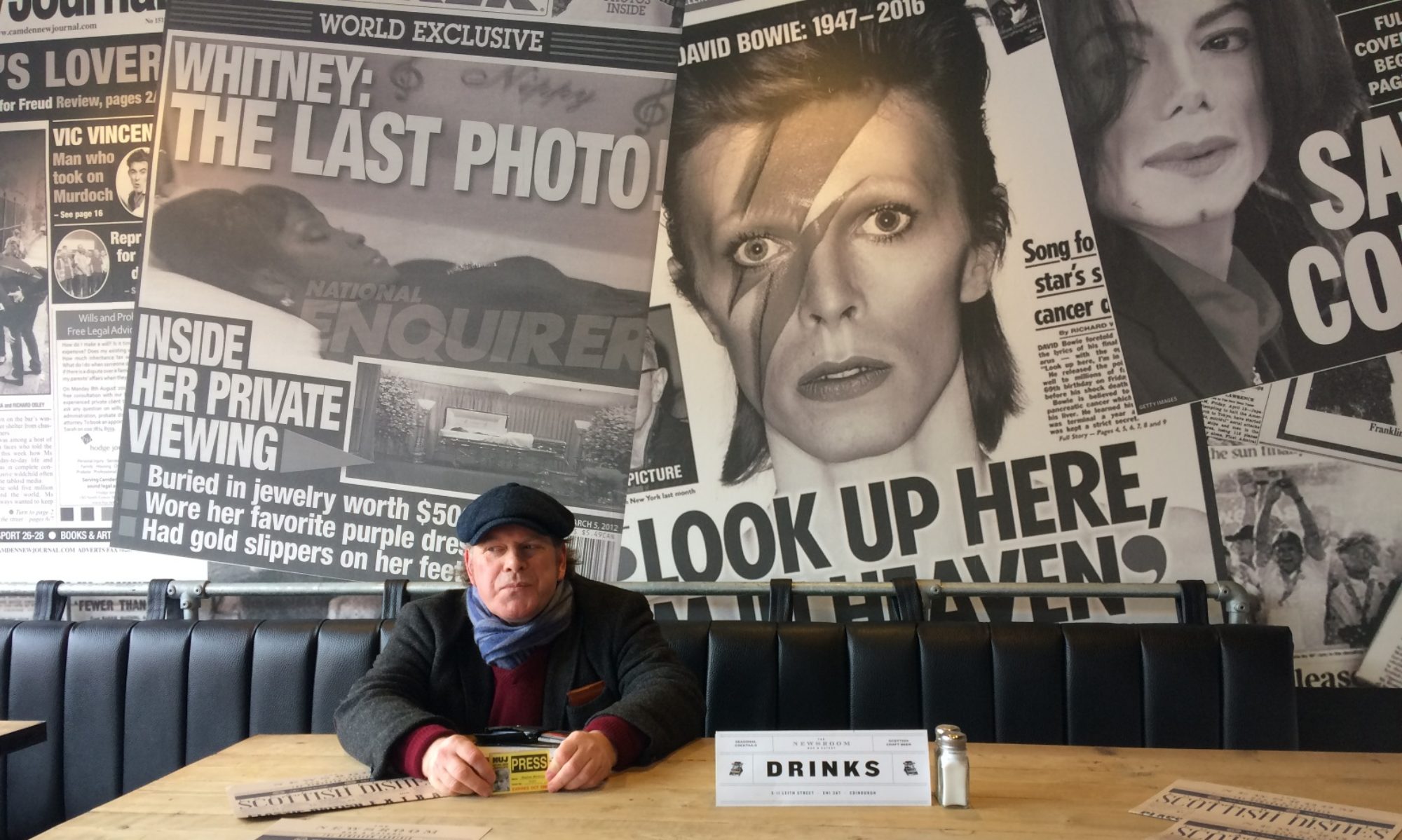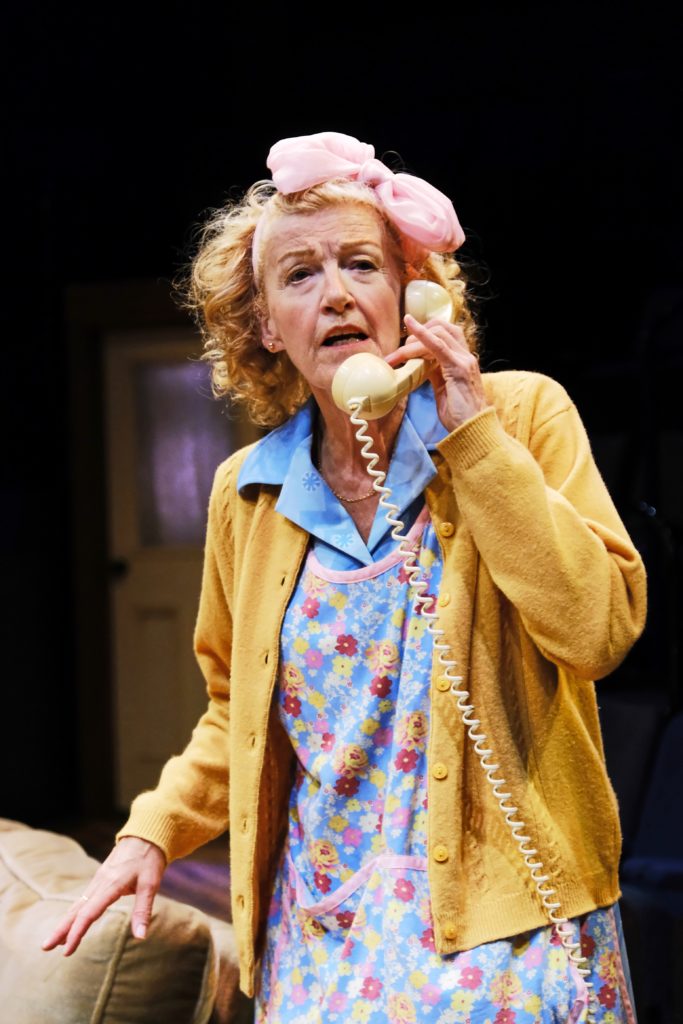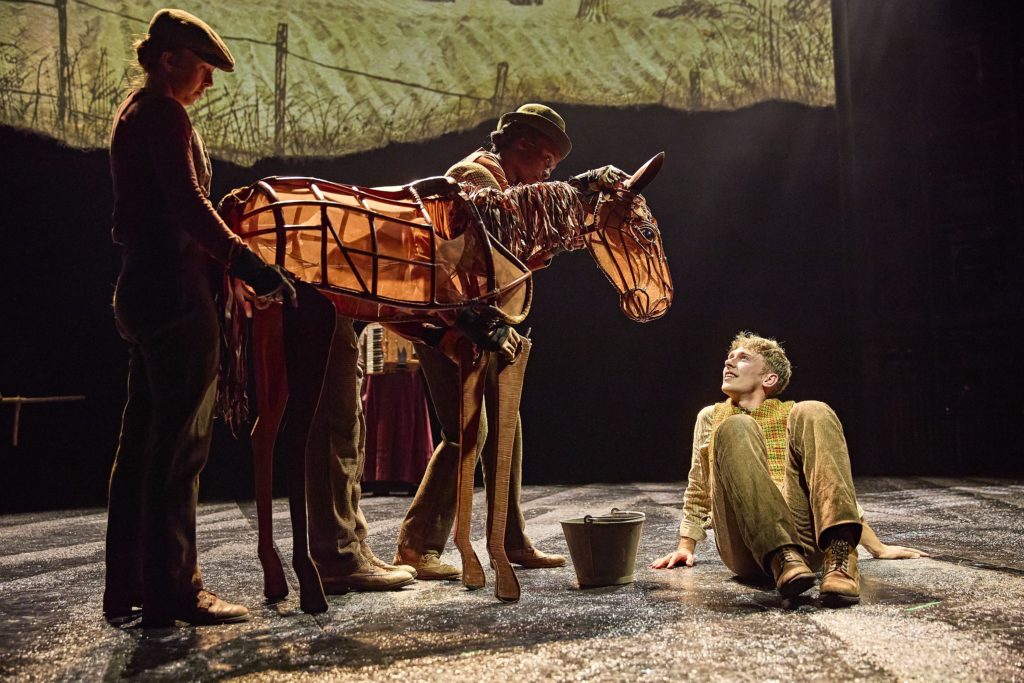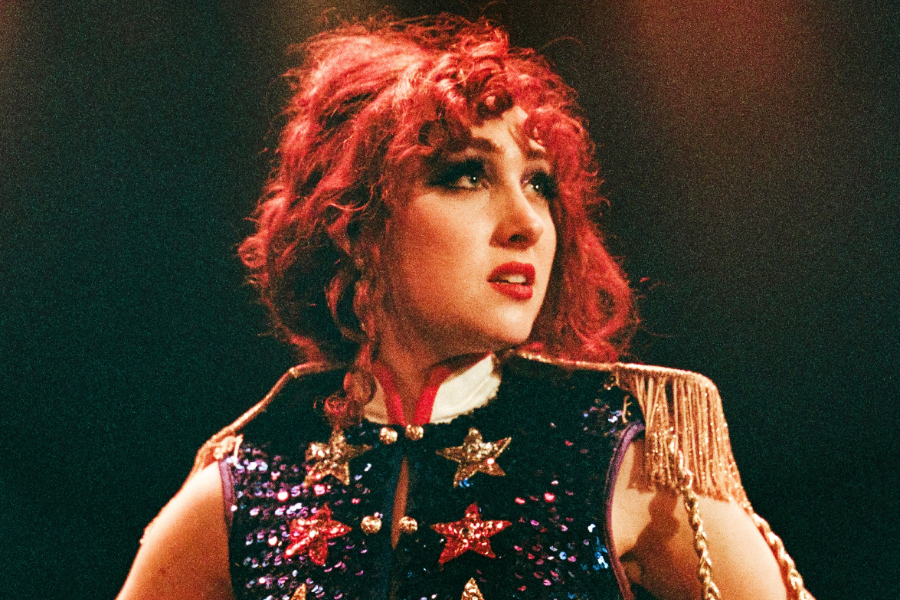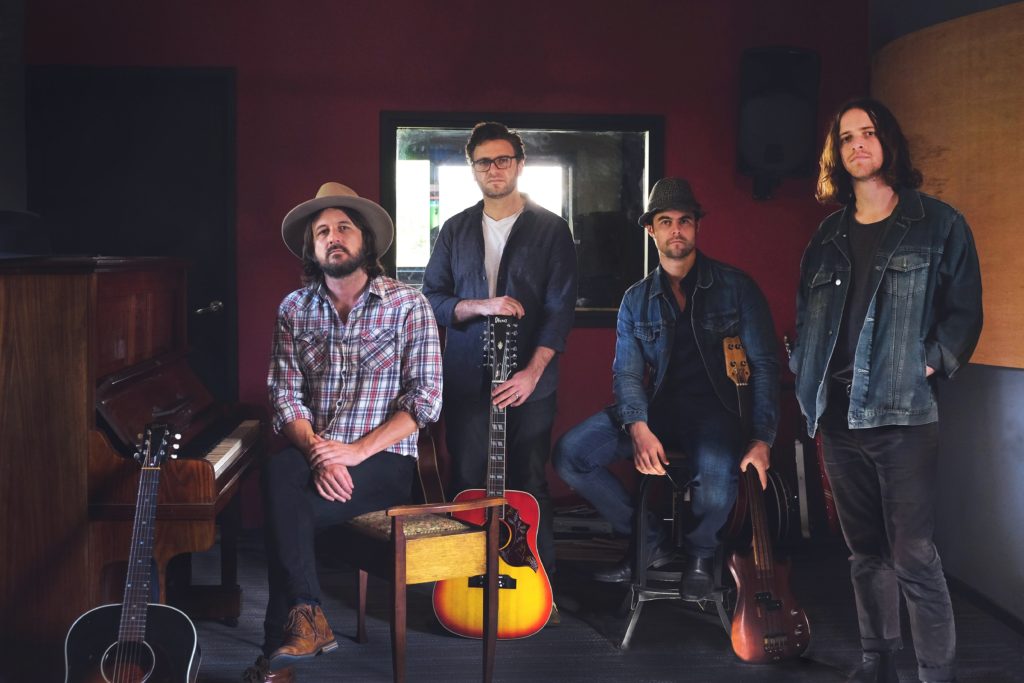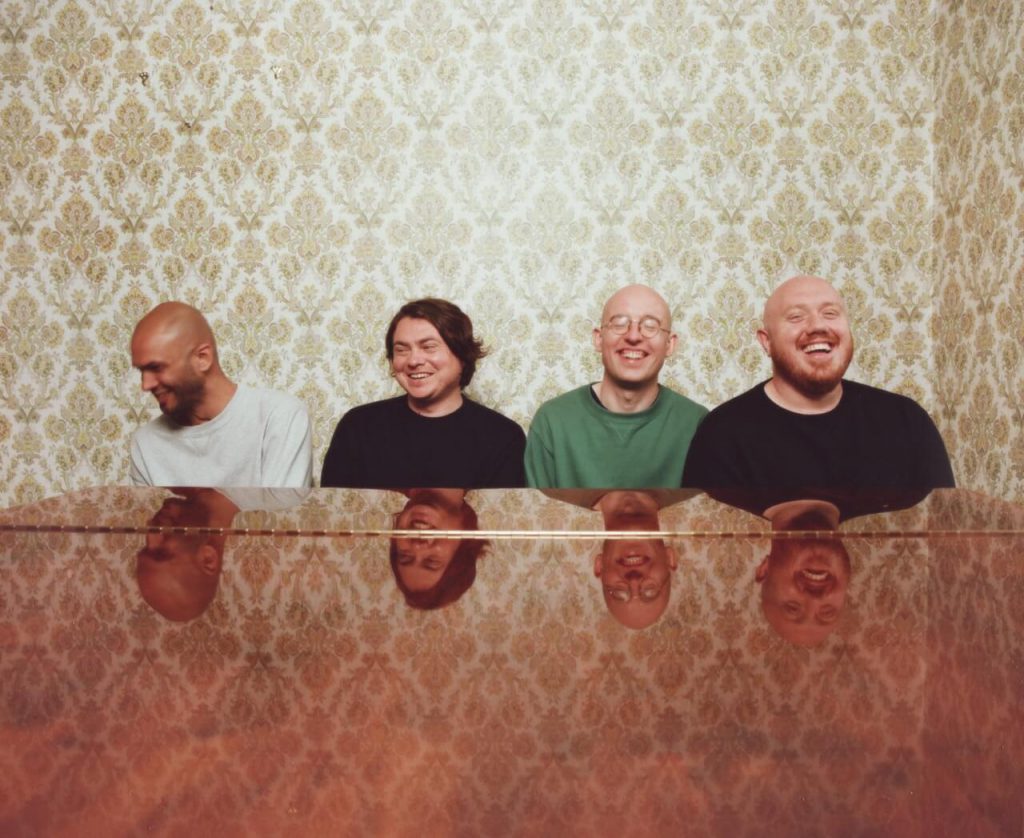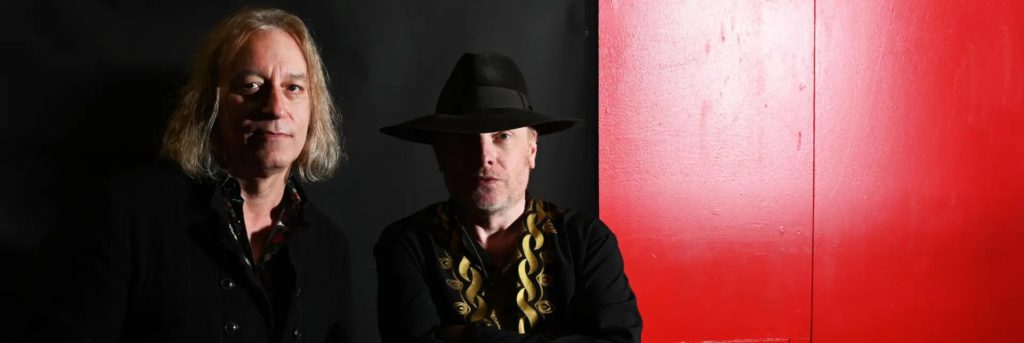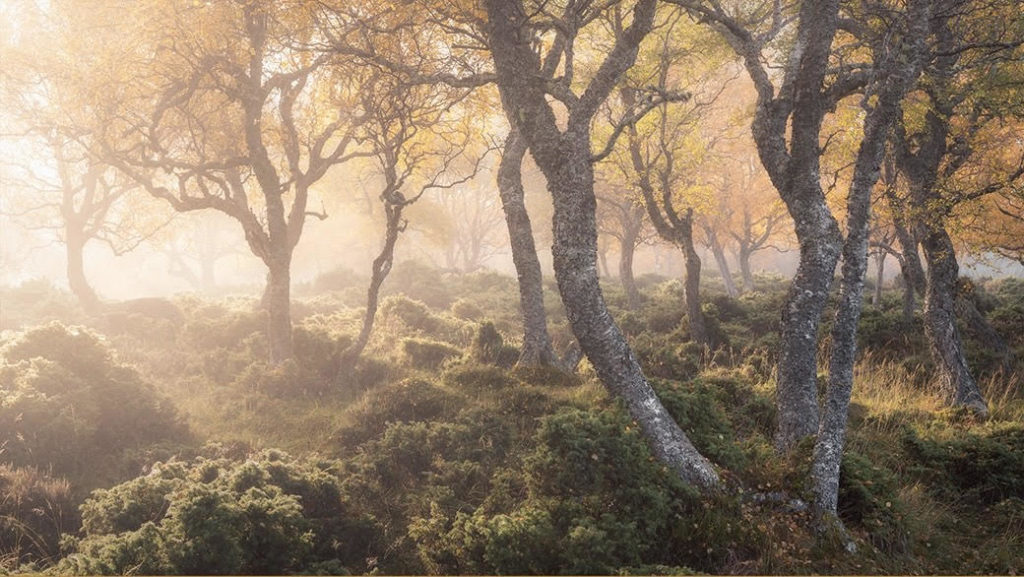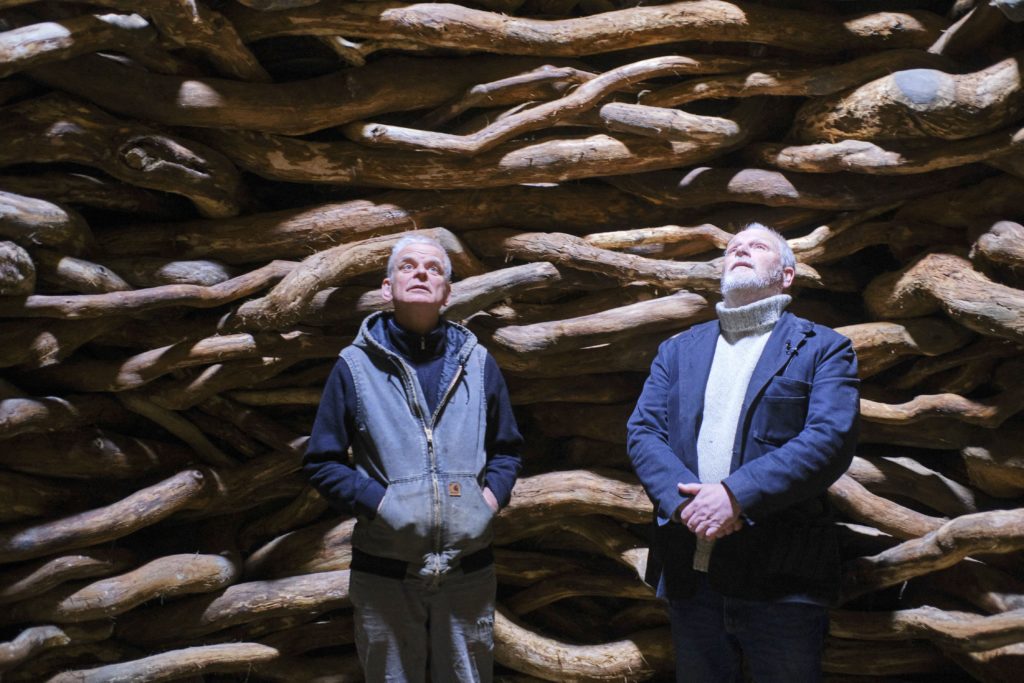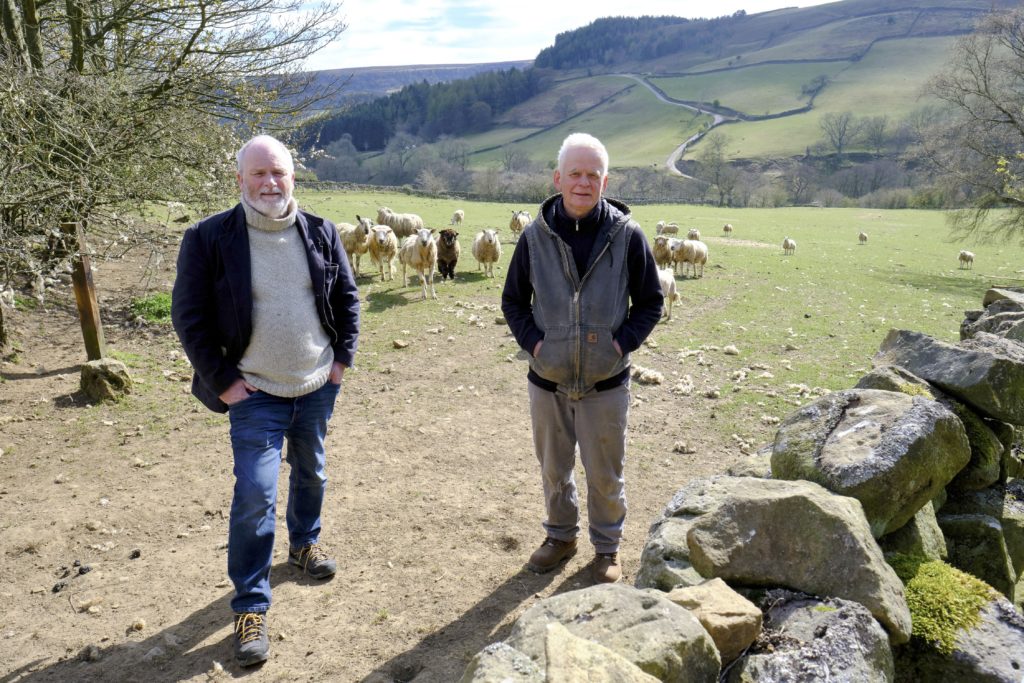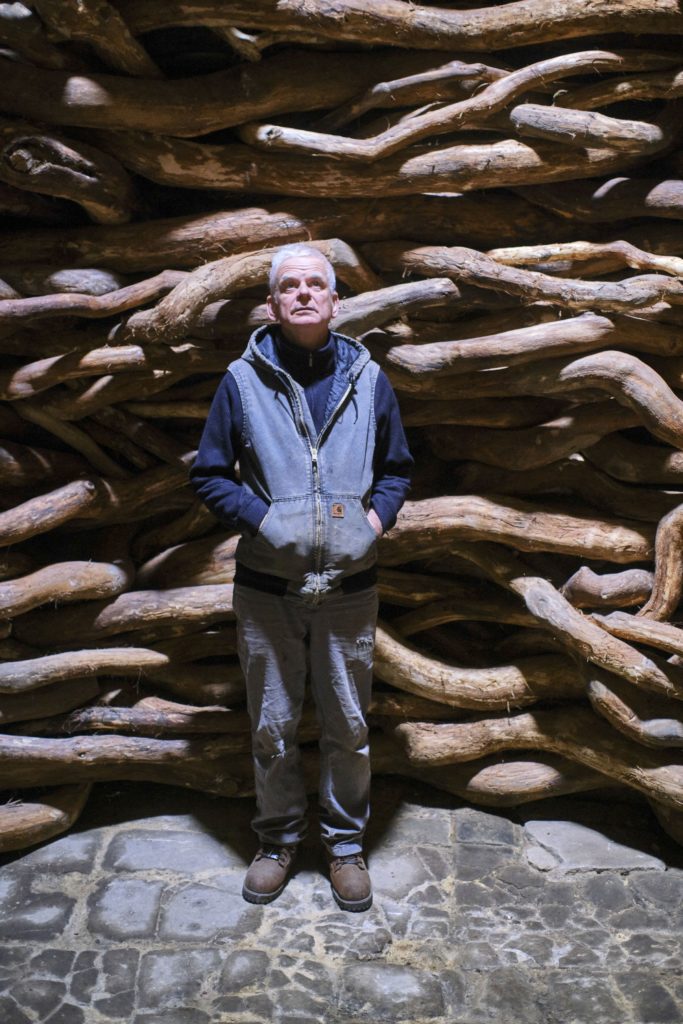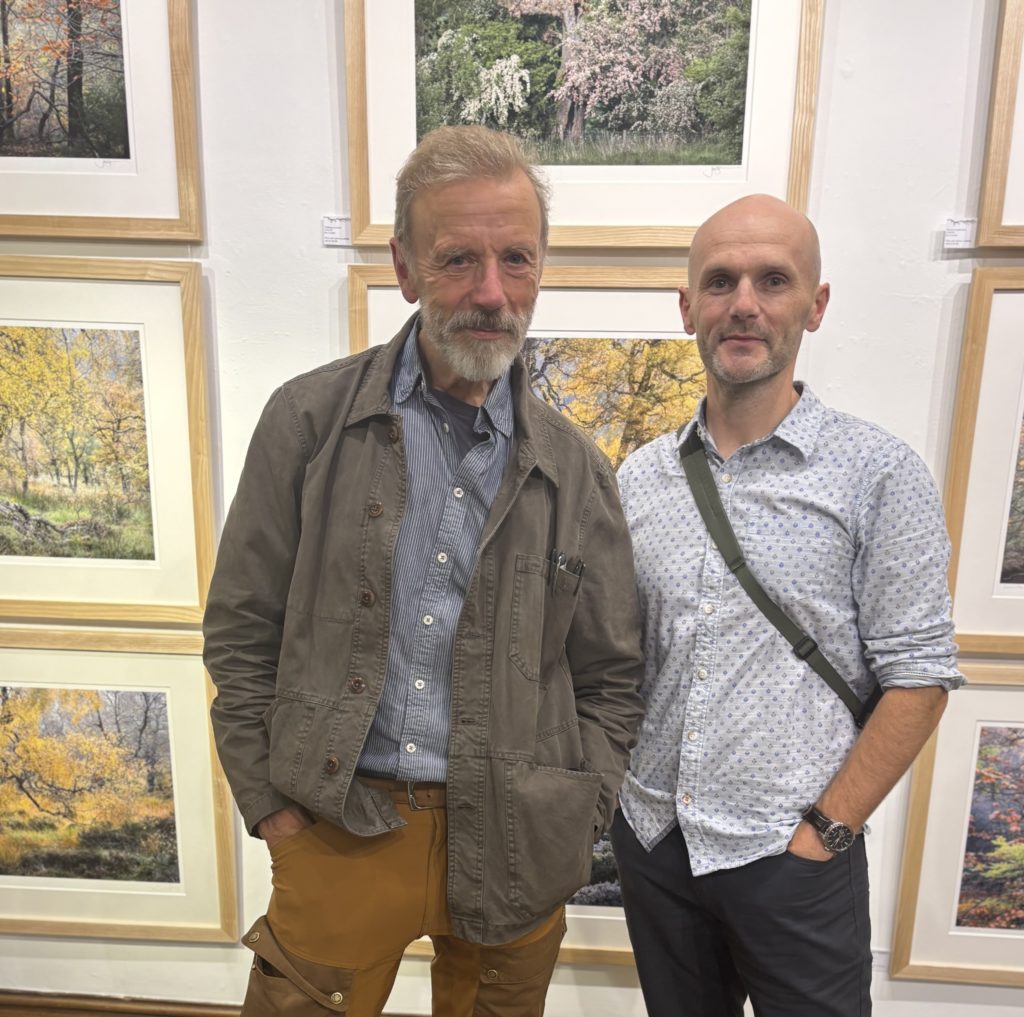
Great Ayton photographer Joe Cornish, left, and Gisborough counterpart Simon Baxter at last Saturday’s launch of All The Wood’s A Stage at Nunnington Hall. Picture: Celestine Dubruel
NORTH Yorkshire photographers Joe Cornish and Simon Baxter’s exhibition All The Wood’s A Stage takes its inspiration as much from Shakespeare as nature.
The title is a spin on All The World’s A Stage, the opening line of Jacques’ Seven Ages Of Man soliloquy in As You Like It, prompting Joe and Simon to mirror theatre’s format by present their show in four acts, or four ages/stages of trees, in three top-floor rooms and the linking corridor against the backdrop of Nunnington Hall’s gardens and trees in late-summer seasonal change.
“Trees and woodland may seem sedate, but drama unfolds slowly, staged over seasons, years, decades, even centuries,” reads one statement on the exhibition walls, where the photographs are divided into Emergence, Interference, Transience and Performance.
Joe, from Great Ayton, and Simon, from Gisborough, present trees as “actors on the woodland stage”, representing the three forms of Shakespeare’s plays: comedy in their branch formations; history in their rings of life; tragedy in their fate, whether deforestation, heat stress, climate change, or the crass felling of the Sycamore Tree Gap near Hadrian’s Wall in September 2023 that led to prison sentences for Daniel Graham and Adam Carruthers.
“We must learn to reconnect with nature, and woodland is a good place to start,” say the photographers. “Trees are critical actors in nature whose time on this planet far exceeds our own.” 360 million years, to be precise.
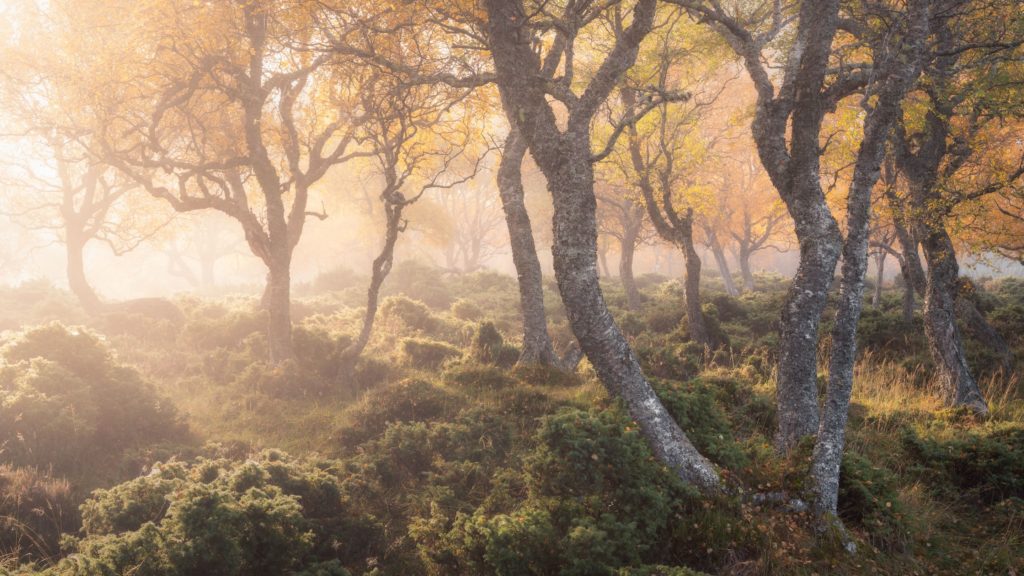
All The Wood’s A Stage, by Simon Baxter
Joe and Simon had first used the term “All The Wood’s A Stage” in their Woodland Sanctuary exhibition at the Moors Centre, Danby, in 2022. This time their focus spreads beyond Yorkshire to take in the South, Snowdonia, the Lake District and Scotland too in “celebration of the beauty and vital significance of trees, woodland and forests across the UK”.
Exhibition curator Laura Kennedy, Visitor Experience and Programming Manager at Nunnington Hall, says: “All The Wood’s A Stage invites us to see trees as silent performers on nature’s stage – inviting us to observe, listen and reflect.
“Trees provide joy, peace, and inspiration; they are the lungs of the Earth, guardians of biodiversity, and a crucial part of our mental and physical well-being. Through changing seasons, they symbolise life, death, and renewal.
This exhibition promises a truly uplifting experience, inviting visitors to fall in love with woodland life all over again.”
Both photographers attended last Saturday’s launch of 65 photographs for sale, complemented by two short films, to the noises-off accompaniment of the day’s incessant downpours. They work on their exhibitions and accompanying books in tandem – they live ten miles from each other – discussing potential themes, selecting each other’s photographs for the shows, printing together, but always photographing separately, even on joint excursions.
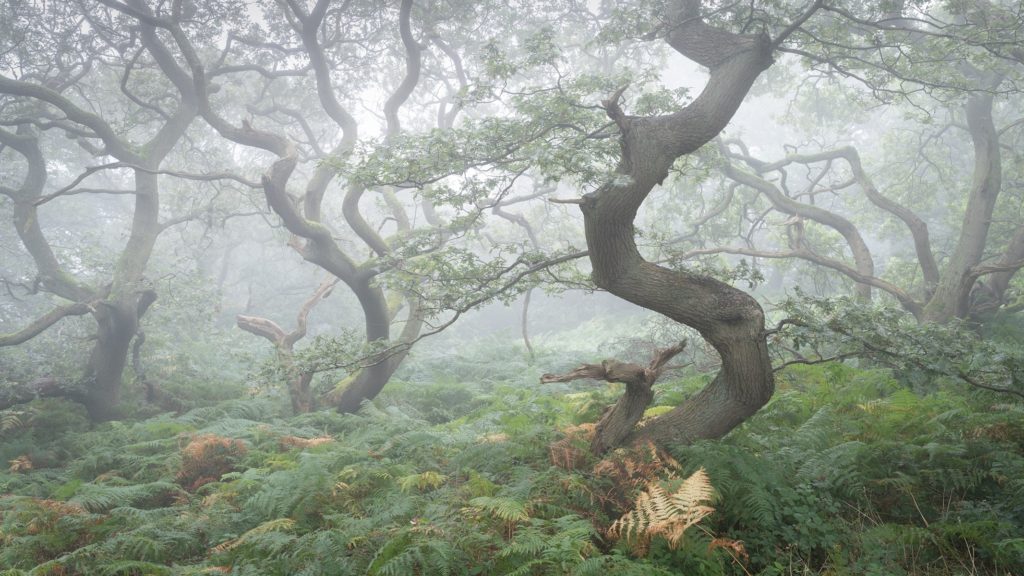
Dancing Trees, by Joe Cornish
“We think it’s important to listen to nature, and to express empathy, which comes from knowledge, but to have access to knowledge has to come from experience. For me, being in nature, among trees, has helped with my wellbeing,” says Simon.
“Through my photography, I’m doing justice to the woods, as a celebration of what they’ve done for me through their power to heal. It’s a celebration to say I love this natural world so much, not because it creates a great photograph but because I feel better among trees, and I want to share that wonder – and if nature can revert you to a different state of mind, it’s a very powerful thing.”
Joe and Simon see their work as holistic. “We know of the performative aspect of trees, sometimes as leading characters, sometimes as supporting cast, and if trees are the primary actors, where do we fit in? We are the audience,” says Joe.
He is delighted to be exhibiting at Nunnington Hall. “To have our work on show in this beautiful place, it’s like a sanctuary,” he says. “The National Trust has been very supportive of the arts, and I really hope that the trust can continue to play its leading role in providing spaces for artists to show their work.
“I see photography as a political act, and I slightly bristle at the thought that we just take pretty pictures. What we do is take pictures to offer a sense of hope.”
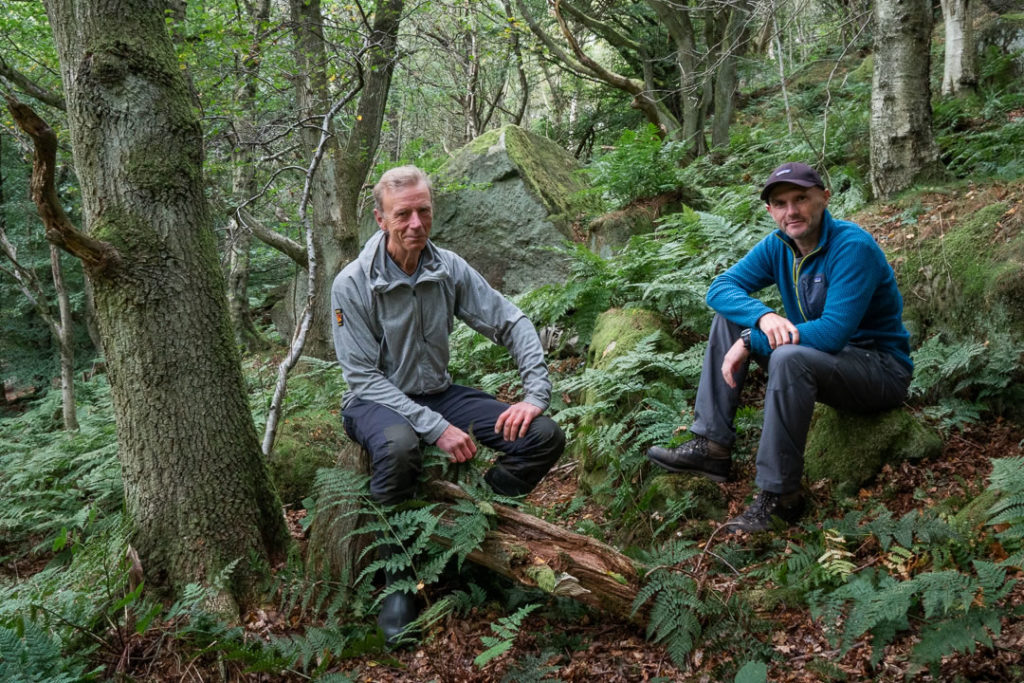
Woodland wanderers Joe Cornish, left, and Simon Baxter
Joe has experienced has own drama when filming for an exhibition with a theatrical structure. “I broke my neck falling off a mountain at Assynt [north of Ullapool in the Northwest Scottish Highlands],” he says. “I was hit by a gust of wind so hard that, even with my camera equipment on my back, I was knocked off my feet and fell quite a long way,” he recalls. “It was such a dangerous place, I had to walk for a mile but then the pain became unbearable.”
Joe was taken to hospital by mountain rescue helicopter. “Luckily I hadn’t damaged my spinal cord,” he says. “I’ve camped on the top of that mountain since then, which felt like an act of redemption.”
The trees, the woods, their theatre of life, will keep calling him and Simon back again and again.
Joe Cornish and Simon Baxter, All The Wood’s A Stage, on show at Nunnington Hall, Nunnington, near Helmsley, until March 29 2026. Opening hours: 10.30am to 5pm daily; last entry, 4pm; from October 1, closed on Mondays.
Normal admission prices apply, including entry to the exhibition, with free entry for National Trust members and under-fives. To book tickets, go to: www.nationaltrust.org.uk/nunnington-hall.
Cornish and Baxter’s self-published accompanying book, All The Wood’s A Stage, is on sale at £30 at Nunnington Hall, along with copies of Woodland Sanctuary. Visitors can buy prints on display too.
